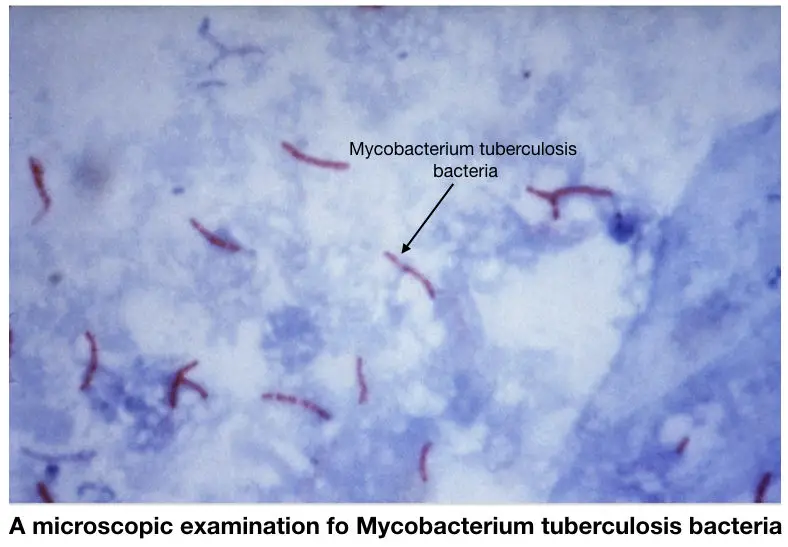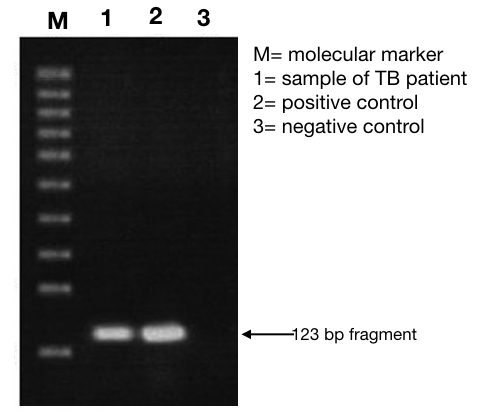“The TB PCR method is the gold standard method in the detection of Tuberculosis infection.”
In this method, the insertion sequence of the Tuberculosis is amplified using the polymerase chain reaction for the detection of the pathogen in any biological samples. For any of the biological samples whether it is blood, pulmonary fluid, sputum or vaginal swab, the TB PCR method gives 100% accurate results.
The pathogen is also quantified using the real-time quantification method, by which we can predict the stage of infection. TB PCR is a simple method yet, very sensitive and required great precision and care. In this article, we will understand the basic mechanism of TB PCR, the genetics of tuberculosis and the advantages and disadvantages of TB PCR.
Key Topics:
What is tuberculosis?
“The worlds one-third population is suffering from TB.”
The pathogen is discovered in the year 1882 by Robert Koch. The pathogen is most prevalently infects the mammalian respiratory system because tuberculosis required more oxygen.
The genome of the pathogen is sequenced in the year 1998 and it contains almost 4 million base pairs.
| Domain | Bacteria |
| Phylum | Actinobacteria |
| Class | Actinobacteria |
| Family | Mycobacteriacea |
| Genus | Mycobacterium |
| Species | M. tuberculosis |
| Name | Mycobacterium tuberculosis |
The TB pathogens are propelled in the air through cough, sneeze and spit. However, the disease is curable and can be prevented. All age group are at risk of TB. The chance of TB infection is very high in patients having HIV infection.
The common symptoms of TB are,
- Blood in the sputum,
- Weight loss, weakness,
- Loss of appetite,
- Fewer at night,
- Cough and
- Chest pain.
The available diagnostic methods for TB are chest X-ray, sputum smear examination and TB PCR.

One of the most sensitive and specific methods of TB detection is tuberculosis culture which has high sensitivity and specificity. However, the method is time-consuming, it takes almost 8 weeks for giving positive results.
Importantly, the TAT (turn around time) is the most critical factor in the case of TB, as the culture method takes more time, the need for the rapid and quick diagnostic method arises.
The TB PCR facilitates detection within 3 hours.
The procedure of TB PCR
The method of TB PCR starts with the sample collection.
The sample for the TB PCR is any biological sample, it may be pleural fluid, sputum, blood, vaginal swab, neural fluid or any solid tissue.
The sample must be collected in sterile and strick stringent conditions. The sample must be collected in the air-tight container because the chance of infection is high in TB.
Do not touch the sample without hand glows and face mask.
Now, DNA extraction.
We can use any of the DNA extraction methods for extracting DNA from TB sample. Still, prefer ready to use DNA kit which minimizes the risk of infection.
Extract DNA is class three safety cabinet or under strict sterile conditions.
If possible heat the sample before proceeding further.
Once the DNA is extracted the sample is out of infection risk.
In the case of blood, the major problem arises with the use of traditional DNA extraction methods. The use of the traditional methods of DNA extraction also extracts DNA from the whole blood too, hence PCR amplification is not possible with the two types of DNA because the chance of the false-positive results is high.
Our DNA extraction methods,
- CTAB DNA extraction buffer for plant DNA extraction
- Proteinase K DNA extraction method
- Phenol-chloroform DNA extraction method
Therefore, DNA extraction is performed using the buffy coat of the blood. For that, around 10 to 12 ml of blood is needed. After centrifugation, the buffy coat is taken for DNA extraction.
Now we can extract DNA using one of the DNA extraction methods.
Preparation of PCR reaction for TB PCR:
Why we selected IS6110, IS1081 or IS986?
The insertion sequences present into M. tuberculosis specifically into the mycobacterium are repeated sequences which are conserved into tuberculosis. These sequences are present up to 20 copies in a single bacterium hence it is easy to target it.
Also, the amplification can be achieved even if a single bacterium is present.
Basic reaction preparation for TB PCR:
| Component | Concentration | Quantity |
| Master mix | 1X | 12µL |
| PCR reaction buffer With 2mM MgCl2* | 1X | 5µL |
| Forward primer** | 10pM | 1µL |
| Reverse primer*** | 10pM | 1µL |
| Template DNA**** | 30ng | 3µL |
| Water | 3µL | |
| Total | ————————– | 25µL |
- *the buffer must contain MgCl2, KCl, tris and 0.02% gelatin.
- **5′-CCT GCG AGC GTA GGC GTC GGT-3′
- ***5′-CTC CTC CAG CCC CCC CTT CCC-3′
- ****if the sample is directly used, add 6µL of a sample and do not use water. If the supernatant is used add 5µL of sample and 1µL of water and balance the reaction final volume up to 25µL.
PCR reaction set up for the TB PCR,
| PCR Steps | Initial Denaturation | Denaturation | Annealing | Extension | Final extension |
| Temperature | 94̊C | 94 ̊C | 68 ̊C | 72 ̊C | 72 ̊C |
| Time | 3min | 45min | 45sec | 50sec | 7 min |
| ——————– | ——————- | 25 cycles | ————— | ——————— |
The product of the TB PCR is 123bp long DNA fragment which is analysed on 2% agarose gel.

Note: minor variations in the reaction preparation and PCR protocol may require.
Variations in TB PCR
There are so many variations of the MTB PCR are available. Scientists used different variations as per their convenience.
A quick DNA extraction method:
In this method, the sample is centrifuged for 10,00rpm and pellets are collected.
The pellets are dissolved in the TE buffer and boiled for 10 to 20 minutes.
After the centrifugation, the supernatant can be directly used for the PCR amplification.
Hot start PCR for Tuberculosis:
Hot start PCR is one of the best choices in the TB PCR method.
The sample is directly inserted into the PCR tube and initially heated in the PCR machine for 10 minutes. Remember the Hot start method? No,
Read the article here: What is hot start PCR.
The amplification can be done using the PCR protocol given above.
Nested PCR method:
The nested PCR method is also applied here for achieving sensitivity. We have IS1081 sequence-specific primers, another primer set internal to this sequence can be designed only to amplify the IS1081 sequence of the TB pathogen, it facilitates high sensitivity and accuracy in the results.
Quickly look at the nested Primer placing in nested PCR.

Nonetheless, by using the conventional PCR amplification of the TB pathogen we can only conclude the presence or absence of the bacteria. Quantification is still not possible by this method.
Real-time PCR:
The Real-time PCR or qPCR is the game-changer in the diagnosis of TB.
For quantifying the number of the bacteria-infected the sample, we have to do real-time PCR.
In the Real-time PCR the reaction preparation is different and also the primer used for the amplification are different.
It is better to use the TB Real-time amplification kit for achieving high sensitivity and specificity. This kit contains all the reagents, primers and chemical needed for the amplification and quantification of a pathogen. It is commercially available.
The advantage of TB PCR:
Obviously, it is accurate that the conventional microscopic method.
Even a single bacterium can be detected.
Any sample can be used and detected with 100% accuracy.
The number of bacteria can also be quantified.
Decreases the TAT (turn around time).
Disadvantages of TB PCR:
Chance of false-positive results is higher.
Chance of infection is higher.
Read more:
Conclusion:
The TB PCR method is rapid, advance and accurate. The TAT can be maintained and the patient can be diagnosed in the early stage of the infection by TB PCR method. However, multidrug-resistant TB infection cannot be precisely detected by the conventional TB PCR method. Rea- time TB PCR assay helps to do this. Also, the turn around time is decreased by using the real-time assay.
Subscribe to our weekly newsletter for the latest blogs, articles and updates, and never miss the latest product or an exclusive offer.



